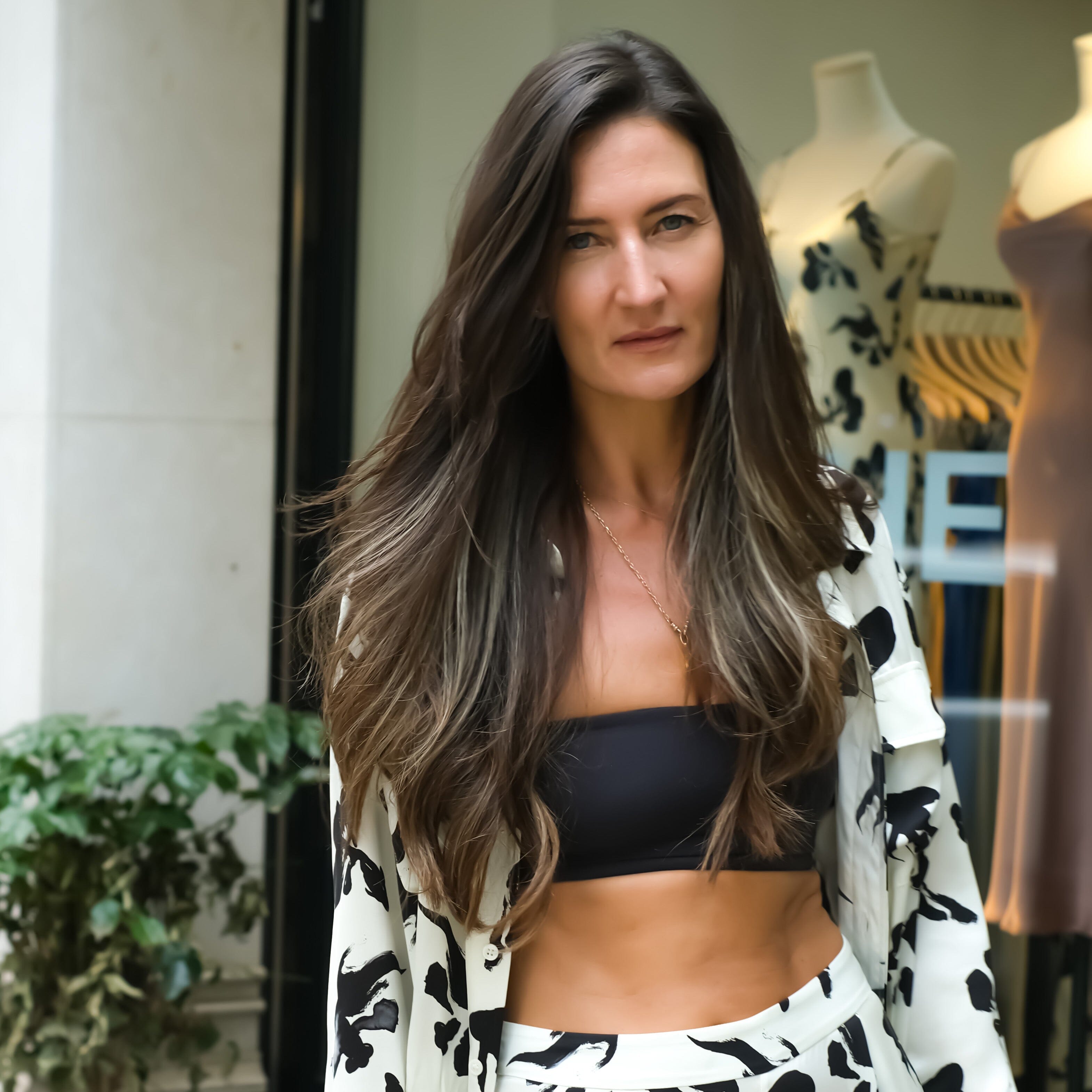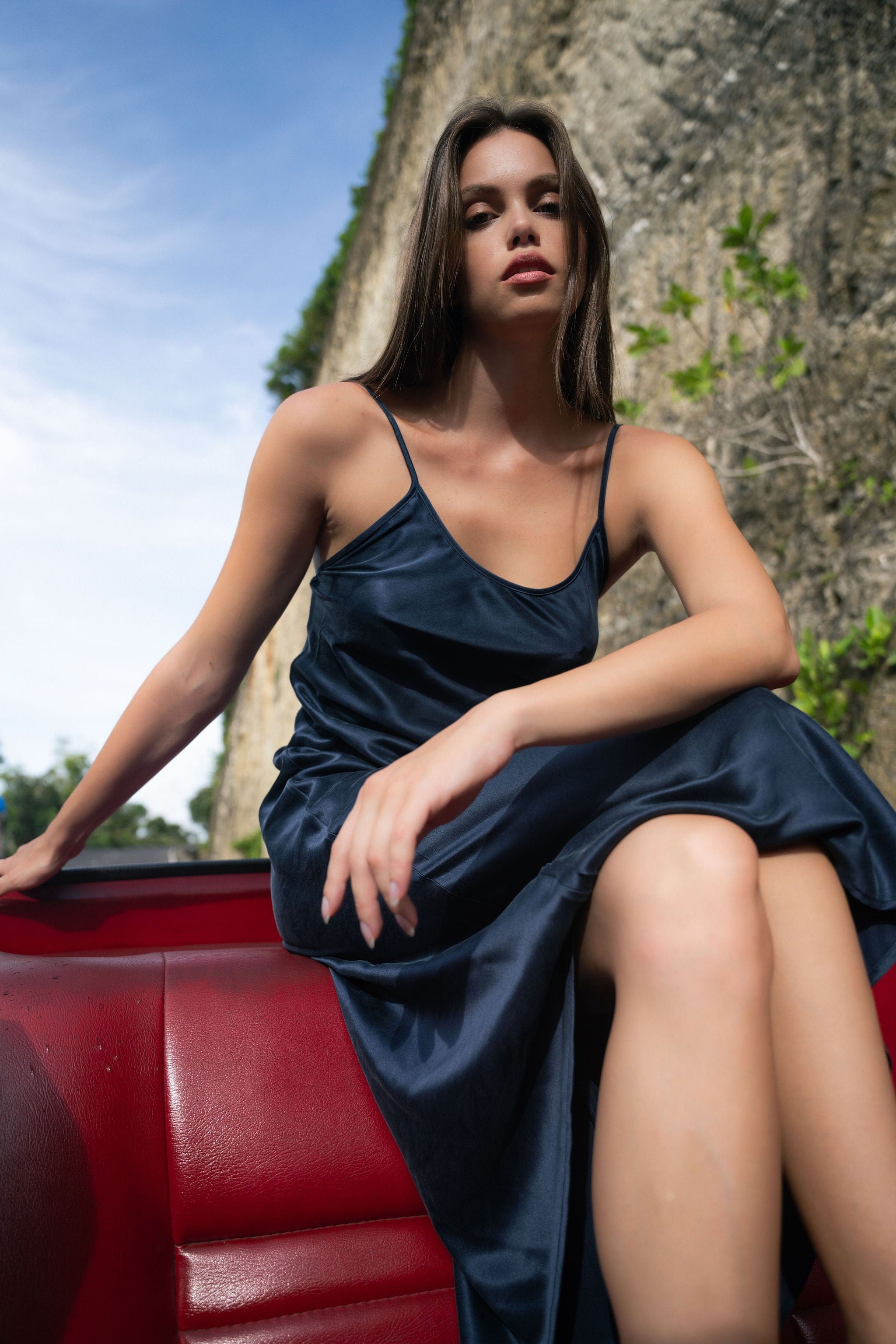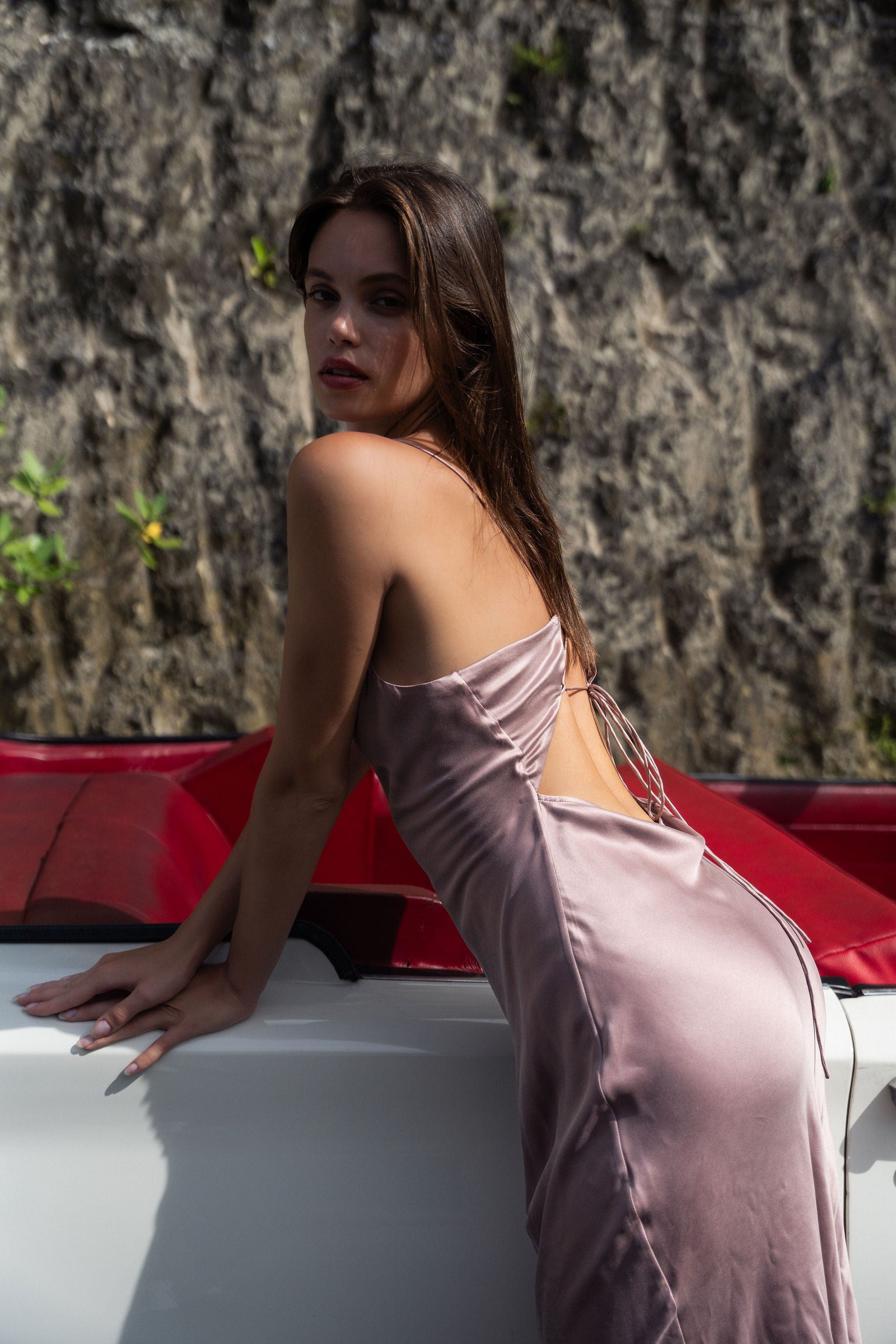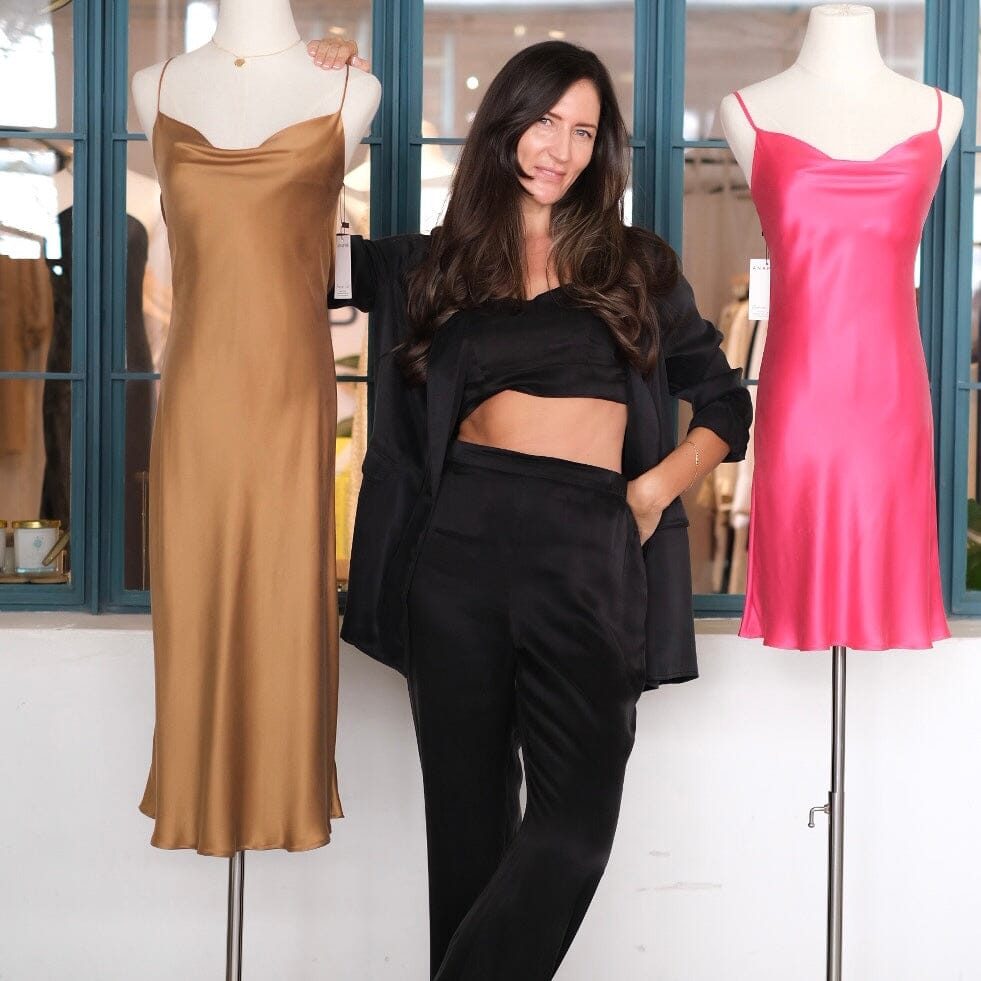
5 Things you need to run a successful fashion brand today’ interview for Authority Magazine by Candice Giorgiadis with our founder Katy
Modern Fashion: Katy Poyner of Anaphe On The 5 Things You Need To Lead a Successful Fashion Brand Today
An Interview With Candice Georgiadice

A vision; know where you are heading. We know that we want to influence and create consumer change. One of our main goals is to take small steps each day towards a sustainable future and reducing the global reliance on fast fashion. We do this by constantly adapting and looking for new ways to reach out and speak to the customer. Offering styling advice and constantly expanding on the ways we practice sustainability. Live by a rule, how many months in the year can you wear the item you are about to purchase? Will the material see you through more than one season? Can this item be worn multiple ways or for multiple events? The brand pillars that you set are great to keep looking back at to cement your vision.
Many in the fashion industry have been making huge pivots in their business models. Many have turned away from the fast fashion trend. Many have been focusing on fashion that also makes a social impact. Many have turned to sustainable and ethical sourcing. Many have turned to hi tech manufacturing. Many have turned to subscription models. What are the other trends that we will see in the fashion industry? What does it take to lead a successful fashion brand today?
In our series called, “5 Things You Need To Lead a Successful Fashion Brand Today” we are talking to successful leaders of fashion brands who can talk about the Future of Fashion and the 5 things it takes to lead a successful fashion brand in our “new normal.”
As a part of this series I had the distinct pleasure of interviewing Katy Poyner.
Katy Poyner is the founder of Anaphe, a luxury silkwear brand on a mission to create quality, timeless pieces that will stand the test of time. Before founding Anaphe, Katy lived and worked all over the world in aviation, flying planes and working as an air traffic controller for 15 years in the UK, Middle East, and Hong Kong, where she currently lives and where Anaphe is based. Upon arriving in Hong Kong, Katy had a hard time finding sustainably made clothing. Feeling that there was no middle ground between fast fashion and overpriced luxury pieces, she created Anpahe to fill a gap in the market for timeless pieces, sustainably made in excellent quality.
Thank you so much for doing this with us! Before we dig in, our readers would like to get to know you a bit more. Can you tell us a bit about your childhood “backstory”?
Thank you for taking the time to talk to me today. When I was younger, I loved to spend time with my grandparents, they lived in a beautiful Victorian house in Yorkshire, UK. My gran had the most amazing sewing room where she made all mine & my sisters’ clothes. I would walk into the room and be mesmerized by the beautiful colors and textures. One of my favorite things to do was to visit our local haberdashery store to pick out buttons for my outfits. I learnt how to use cut offs to make scrunchies, headbands and little bags. My grand wouldn’t waste any material, and this was my introduction to sustainability at a very young age.
Can you tell us the story about what led you to this particular career path?
I have always been a creative with a passion for quality over quantity. It’s a little interesting as I worked in the aviation industry for 10 years as an Air Traffic Controller, it allowed me to work overseas in the Middle East and Hong Kong. It was after moving to Hong Kong where I started to think about design and creating my dream of having a sustainable fashion brand. In Hong Kong, I found it very difficult to find high quality clothing for reasonable prices; the options were fast fashion using polyester and viscose or very high-end brands that were not affordable to most people. I decided to create a brand that was positioned solidly in the mid-range; making sustainable, quality materials accessible to more people. It felt like a fitting time and place to begin that journey as silk clothing was first made in China hundreds of years ago.
Can you share the most interesting story that happened to you since you began your career?
Every day is interesting and brings new challenges. We meet the most amazing individuals as we continue to grow. We love the community that we are creating. Our community is a huge support and brings with it many opportunities. One interesting anecdote, though, is that a few months into Anaphe’s existence, we found that in Hong Kong at that time it was quite taboo to wear silk in public; many people thought it was solely to be used as sleepwear! We had to help show different ways to style the pieces and explain the benefits of wearing silk in such a hot climate. We did this through social media and by hosting styling sessions.
You are a successful business leader. Which three character traits do you think were most instrumental to your success? Can you please share a story or example for each?
Kindness, inclusivity and passion; I value everyone around me and appreciate the smallest gestures, this encourages people to grow with me. I want my staff to feel that Anaphe is ‘our’ brand, as without the Anaphe team, I really cannot achieve anything. Every person has a part to play, and I love to find and help grow their strengths. Anaphe is not just about brand growth, we want to see our team develop and overcome challenges. From the very beginning, it was really important to me that we made the dresses available in a full-size range. In Hong Kong this is very rare as most clothing tends to run very small. The largest sizes are equivalent to XS in USA sizing, which needless to say excludes a huge majority of people. I myself typically wear a UK10, and I really struggled to find clothing that fit. I want everyone to feel included and this was instrumental in our success, especially in the first phase of launching. Our customer base became very loyal. I have a tremendous amount of passion for women to wear beautiful clothes that they feel excited and happy to put on. I want our customers to feel empowered when they wear our designs. Mostly nowadays we feel that we cannot fit into clothes, I wanted to create a clothing line where the clothing fits the woman no matter what the shape or size. This is the mindset I take on when creating new designs.
What do you think makes your company stand out? Can you share a story?
We stand out because of our values, quality and connection. We value our planet and only create timeless classics that will see women through decades, rather than seasons. We only work with small factories to produce our clothing under direct supervision. The factories we work with value their staff and this dedication to care shines through in our final product.
The silk slip dress has been made for thousands of years in China; we have updated the silhouette to create a perfect drape. We are not pushing out thousands of designs per week, we work hard to create small collections that can be mixed and matched with your current wardrobe, and we are always on hand to give styling tips to our customers which helps reduce excess and in turn creates a strong connection with our valued customers.
Do you have a favorite “Life Lesson Quote”? Can you share a story of how that was relevant to you in your life?
‘Great things never came from comfort zones’ — I was Air Traffic Control for more than 10 years. I knew that I wanted to start my own brand, but I was very comfortable in a job I knew well with a steady paycheck. I knew starting over was a big risk, but I wanted to feel fulfilled and follow my passion. Looking back, I am so happy that I took the risk and made this happen. As a brand we still have a long way to go, but we are loving our journey so far and can’t wait to see what the future holds for us.
Ok, thank you for that. Let’s now jump to the primary focus of our interview. Do you see any fascinating developments emerging over the next few years in the fashion industry that you are excited about? Can you tell us about that?
We are currently in a strange place with fashion. Unfortunately, greenwashing is extremely prevalent at the moment. There are a lot of celebrity collaborations with fast fashion giants that are claiming to have sustainable lines while being anything but. This is something that needs to change, we are encouraged to see more people stand up against this irresponsible behavior.
We currently use silk as it is biodegradable and a natural material. Admittedly, silk is not perfect, but it is very strong and with the correct care, it can last a very long time. We are interested in exploring even more sustainable fabrics that are being developed from vegetable waste and other even more sustainable practices.
Can you share how your brand is helping to bring goodness to the world?
We support many different projects through offsetting our carbon footprint and profits from our exclusive prints.
Upon checkout, we offer our customers the choice to offset their carbon emissions by supporting a cause. We are currently working with TONTOTON Ocean Plastic Removal in Vietnam, as it is the first organization to receive the Ocean Bound Plastic Certification.
TONTOTON collects and recycles low or no-value plastics that are often ignored. The project currently operates in 3 locations across Vietnam: Ho Chi Minh City, Hon Son island, and Phu Quoc Island. All rescued plastics are sent to a co-processing facility to generate Alternative Fuels and Raw Materials (AFRM), This reduces carbon emissions and prevents the plastics from entering landfills and the possibility of them becoming marine litter. The project also gives workers more income opportunities as they get to recover all forms of plastic, not just high-value materials. Each worker on the project receives an above-average wage and basic health insurance.
We also create limited edition, mission-oriented prints, like our ‘save the elephants’ print. For every item sold in this print, we purchased a bucket of food from the elephant nature park in Chiang Mai. I actually volunteered at the park myself in 2015 and spent time there caring for the elephants, an experience which made a lasting impression on me. When I read in 2020 that the sanctuary was struggling to feed the elephants during the height of the pandemic, I felt I needed to do something to help.
Since the ‘save the elephants print,’ we have also created a ‘save the bee’s print,’ proceeds of which are donated to earthday.org, and a Cactus print donating a percentage of profits to water.org.
Can you share with our readers about the ethical standards you use when you choose where to source materials?
Yes, I would love to. All our materials are sourced from China and Vietnam, and we use only natural materials. When it comes to sustainability, there is no room for compromise and although cheaper alternatives exist, our climate and we as consumers are paying the price.
We are fully aware and we are constantly asking questions to ensure all aspects of our supply chain conform to Anaphe’s ethics. We work with ethical, fair-trade producers, and develop deep personal relationships with our suppliers.
Silk production is an important livelihood for many farmers around the world. The silk sector employs around 1 million workers in China alone. Silk is a beautiful fiber and with the correct care, it can last you for decades. As a renewable resource, silk is biodegradable and uses less water, chemicals, and energy to produce than many other fibers on the market. Our supplier has a water recycling system to reduce the water needed to produce silk fiber.
The silk we use for our products is sand-washed mulberry silk, which is ideal for hand-washing. We encourage our customers to hand wash their items as it uses less water than machine washing and avoids the use of dry-cleaning chemicals that can negatively impact our environment.
Fast fashion has an advantage, that it is affordable for most people, but it also has the drawback that it does not last very long and is therefore not very sustainable. What are your thoughts about this? How does your company address this question?
We are completely against fast fashion; in my view it has no place in society. Yes, it is affordable on some level, but it’s a false economy as the products only last a couple of washes at most and then end up in landfill, and the styles are seasonal. We try our best to educate consumers on choosing quality materials that will last and timeless classics that can be worn multiple ways to reduce the need for excess. We want our consumers to think about the longevity of the items they are purchasing. Purchasing staples that can be layered and used for multiple events is what we call ‘on-trend.’

Thank you for all that. Here is the main question of our interview. What are your “5 Things You Need To Lead a Successful Fashion Brand”. Please share a story or example for each.
A vision; know where you are heading. We know that we want to influence and create consumer change. One of our main goals is to take small steps each day towards a sustainable future and reducing the global reliance on fast fashion. We do this by constantly adapting and looking for new ways to reach out and speak to the customer. Offering styling advice and constantly expanding on the ways we practice sustainability. Live by a rule, how many months in the year can you wear the item you are about to purchase? Will the material see you through more than one season? Can this item be worn multiple ways or for multiple events? The brand pillars that you set are great to keep looking back at to cement your vision.
Teamwork; make sure you find like-minded people who share your vision. The first time I employed someone I honestly struck gold. I was lucky to find a wonderful operations manager who supports me and our vision. Having a team that understands the business is essential.
Work hard but don’t be afraid to ask for help. Success doesn’t happen overnight; it takes a lot of hard work and dedication. In the beginning I worked every minute from morning until night. In reality, I didn’t need to do this — I should have asked for help sooner. Once I asked for help and my life-work- balance equalized I felt I had more time to focus and grow without feeling overwhelmed. Having too many items on your to-do-list can be detrimental. I try my best to finish one item before starting another.
Customer focus; Once you find your niche, ensure you are providing exactly customer wants. Don’t be afraid to ask for feedback. Your customers are your biggest asset, listen to their feedback and requests. Being present at pop-up events was one of the biggest learning curves for Anaphe. It taught us the concerns regarding our product and encouraged us to push ourselves more and more. Customers in the beginning were reluctant to try on our dresses, at that point we realized we needed to focus on showing that all shapes and sizes can wear our clothing line and look beautiful.
Quality; Never compromise on quality. We have always tried our best to create the most beautiful apparel that will stand the test of time. The silk we use is always 6A grade and OEKO certified to ensure no harmful chemicals are in our silk dying process.
Every industry constantly evolves and seeks improvement. How do you think the fashion industry can improve itself? Can you give an example?
There are so many ways the fashion industry can improve. From over-production, body image, materials used, production quality, longevity to inclusivity. We are currently focused on explaining the benefits of natural materials and inclusivity of wearing silk. We would love to see the big players also do the same. If more of the large players adopted even just 2 of the improvements mentioned without greenwashing, then we would be in a much stronger position than we are now.
You are a person of great influence. If you could start a movement that would bring the most amount of good to the most amount of people, what would that be? You never know what your idea can trigger. :-)
Of course, we all wish we could create change in the world and have a positive impact on society. There are so many worthy causes that it is very difficult to pin-point one singular movement, however something that is very close to my heart is accessibility to education for all. I believe that no matter where you are from and what your background is — you should have access to be able to fulfill your dreams whether that is starting a brand/ business or working in a specific industry. A project that we are working on for next year is to start creating classes in our studio and online to help others create; this will include design, illustration, business knowledge basics, photography and more.
How can our readers further follow your work online?
Follow our IG page @anapheonline & visit our website www.anaphe.com
Thank you for these fantastic insights. We greatly appreciate the time you spent on this.
Thank you for speaking with me!





Leave a comment
This site is protected by hCaptcha and the hCaptcha Privacy Policy and Terms of Service apply.